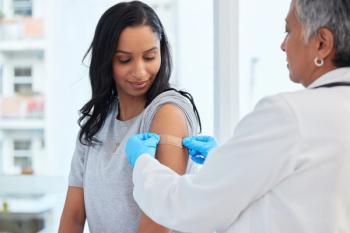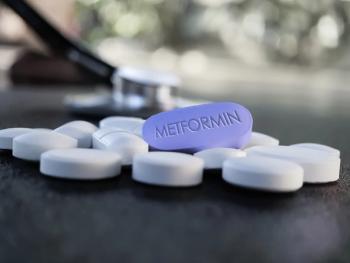
- Vol 68 No 02
- Volume 68
- Issue 02
The promise and challenges of preimplantation genetic testing for IVF
History, potential value, possible candidates, and limitations of PGT for in vitro fertilization.
Preimplantation genetic testing (PGT) is an evolving technology that represents one of the primary advances of assisted reproductive technologies (ARTs) over the past 45 years. In essence, its aim is to prevent the transmission of pathologic genetic conditions, improve in vitro fertilization (IVF) outcomes, and shorten the interval to achieve a successful pregnancy when a normal (euploid) embryo can be selected.1 Currently, it is performed by removing and testing trophectoderm cells from the developing blastocyst, typically 5 to 6 days after oocyte retrieval.2
A variety of analyses may then be performed on the recovered cells, depending on the purpose. There are several different applications of PGT, including testing for aneuploidy (PGT-A), monogenic diseases (PGT-M), and structural rearrangements (PGT-SR). A newer yet unproven application involves screening for polygenic conditions (PGT-P). PGT-A focuses on assessing the embryos created with IVF for their full complement of chromosomes to report which of the embryos are chromosomally normal (euploid) or abnormal (aneuploid). PGT-M is performed to reduce the risk of having an affected child with a known specific genetic condition.
PGT-SR screens for chromosomal structural rearrangements usually associated with balanced translocations or inversions and is most often used for couples with a history of recurrent pregnancy loss. PGT-P can be used to determine potential risk for development of late-onset disorders associated with polygenic traits, including diabetes, cardiovascular diseases, and some malignancies. PGT-HLA is used for human leukocyte antigen matching to ensure compatibility of a fetus with a potential donor, usually one needing hematopoietic stem cell transplantation.
History of PGT
Application of PGT has increased dramatically in recent years, from approximately 1000 cycles in the mid-2000s to less than 19,000 by 2014, to over 54,000 cycles in 2017, or about 40% of ART cycles in the United States, currently.3 The vast majority of procedures performed are for PGT-A. PGT has undergone several transformations since its inception. Initial attempts with PGT-A in the 1990s, performed with cleavage-stage (day 3) embryos, were unsuccessful for several reasons. Because of early mosaicism in the embryo, the limited number of cells recovered was often not representative of the embryo’s ultimate true cell line, and the available technology, usually fluorescent in situ hybridization (FISH), was able to test for only a limited number (typically 5-10) of specific chromosome abnormalities. Reports at the time failed to confirm the efficacy and cited a high error rate of PGT-A with FISH.4 As a result, several professional societies, including the American Society for Reproductive Medicine, did not recommend PGT-A.5
Subsequently, several technologies were introduced to accomplish comprehensive chromosome screening (CCS) of all 24 chromosomes. These included array comparative genomic hybridization (aCGH), single nucleotide polymorphism arrays (SNPa), quantitative polymerase chain reaction (qPCR), and, most recently, next-generation sequencing (NGS). Using these technologies at the blastocyst stage (day 5 or 6) permitted more trophectoderm cells to be obtained, improving the diagnostic accuracy and having fewer deleterious effects on the embryo because a relatively smaller proportion of the cell mass is removed at the later stage of development.6,7 Additional advances in blastocyst cell culture, incubation technology, embryo vitrification, and molecular techniques for assessing the copy number of all chromosomes produced further improvements in pregnancy rates and reduced error rates.2 However, the currently used technologies, including qPCR and NGS, have their own limitations
and advantages.
Potential value of PGT-A
PGT-A offers several potential advantages in IVF. By performing PGT-A and transferring a chromosomally normal embryo, embryo implantation and subsequent pregnancy rates may be improved, which has allowed many IVF clinics to increase use of elective single embryo transfer, thus reducing the multiple pregnancy rate. This has produced a significant reduction in twin and higher order multiple rates since 2014, following 3 decades of yearly increases previously.7 Overall pregnancy outcome and miscarriage rates are also improved in women receiving a euploid embryo, especially in patients of advanced maternal age.8 Time to successful pregnancy has also been shown to be shorter than expectant management in women with recurrent pregnancy loss.
Who should be offered PGT?
Using CCS with any of the newer technologies has enabled detection of chromosomal aneuploidy with PGT-A with benefit to at-risk groups.9 PGT-M should be offered to couples planning childbearing with known heritable diseases in which the genetic abnormality is known or is discoverable. PGT-SR is potentially useful for individuals with known parental chromosome rearrangements, such as a reciprocal translocation, and is especially useful in couples who have experienced recurrent miscarriages, provided the female has an adequate supply of euploid oocytes.9
PGT-A
The presence of chromosomal abnormalities rises with increasing maternal age and is found in greater than 30% of clinically recognized pregnancies in those greater than 40 years.10 In this population, the benefit of PGT-A allows for assessment of aneuploidy status in the hopes of selecting a euploid (chromosomally normal) embryo for transfer.1 Patients who are 35 years or older, as well as those who have experienced prior implantation failures or recurrent miscarriages, may benefit from PGT-A. Selecting and transferring a euploid embryo increases the chance of implantation and successful pregnancy.11
Chromosomal aneuploidy is a major cause of failed IVF cycles and miscarriages and, as noted, is age dependent. By 42 years, the incidence of embryonic aneuploidy increases to approximately 80%.12 A study assessing the aneuploidy rate of PGT-A tested embryos noted increasing rates of aneuploidy with age: age less than 35 years (46%), 35 to 37 years (54%), 38 to 40 years (63%), 41 to 42 years (66%), and age greater than 42 years (54%).13
Although PGT-A seems to be an intuitively appealing intervention, it was not validated to improve ongoing pregnancy rates in a large, multicenter randomized controlled trial of women aged 25 to 40 years using an NGS platform for screening.14 A post hoc analysis did show a significant improvement in ongoing pregnancy rates uniquely in the cohort aged 35 to 40 years. Assessment with morphological criteria has been used traditionally for embryo selection but it does not accurately predict the chromosomal status of the embryos and presents its own limitations.15 Currently, there are significant differences among ART clinics in clinical outcomes with PGT-A, reflected in variable published results, and no clear consensus regarding the optimal age group for PGT-A for guideline recommendations
has emerged.
Limitations of PGT
PGT is not without risks. All types of PGT rely on an invasive procedure performed on the developing blastocyst, which involves surgically extracting trophectoderm cells (typically 5-7) with a pipelle for analysis. The fact that over 30% of subsequently transferred euploid embryos do not yield a successful pregnancy and the significant variation in successful pregnancy rates among labs performing PGT strongly suggest potential harm of the procedure.
In addition to the lack of clarity regarding optimal candidates for PGT-A, there are additional challenges related to result interpretation. The possibility of embryonic mosaicism when more than 1 chromosomally distinct cell line exists in the embryo and at least 1 cell line is abnormal, exists, but normally occurs in only 1% to 2% of embryos in ongoing natural pregnancies.16 True mosaicism is associated with a higher risk of implantation failure and miscarriage. A much higher incidence of mosaicism has been reported with PGT-A, especially using an NGS platform.17 There have been many reports of successful pregnancies with healthy offspring resulting after transfer of some of these affected embryos, suggesting that the PGT-A report may represent a laboratory artifact rather than true mosaicism.18 This phenomenon appears to be a result of variations in intermediate copy numbers of the affected chromosomes, which may create the illusion of mosaicism when the expected preset copy number variant limits are exceeded by the interpretation algorithm.
Additional confounding variables may relate to the fact that the cells that are typically obtained from the outer trophectoderm layer of the embryo might not be representative of the inner cell mass of the embryo, the region destined to become the fetus. Variations in the reported incidence of mosaicism could also result from uneven distribution of mosaic cells in the embryo, test artifact, amplification bias, contamination, variation in biopsy technique, and differing laboratory conditions.19 Disposition of these so-called mosaic embryos has created a complex conundrum for ART centers and their patients who are grappling with the decision of whether to transfer or discard them or await more definitive guidance.20,21
PGT-M
According to the American Society for Reproductive Medicine, preimplantation genetic testing for monogenic diseases for adult-onset conditions is ethically permissible for a range of conditions, especially when the condition is serious and there are no safe, effective interventions.22 PGT-M was the first application of PGT in 1989 and currently can be used to screen potentially affected embryos for over 1000 heritable conditions. These conditions include such diverse diseases as cystic fibrosis, sickle cell anemia, Huntington disease, spinal muscular atrophy, and BRCA carriers. It is theoretically applicable for any monogenic disorder in which the disease-causing locus has been clearly identified. Usually, patients present after they or a close relative has had an affected child, but increasingly couples are seeking PGT-M after both have been determined to be carriers following prenatal screening with an expanded carrier screening panel, often performed prior to pregnancy. Many couples prefer to have an unaffected or carrier status embryo selected than subsequently rely on invasive prenatal diagnosis or taking their chances.
Considerable progress has been made in the diagnostic testing of PGT-M since the original PCR amplification technology was used in the 1990s. Single gene disorders with known genetic variants can be screened with PGT-M following targeted amplification of the specific region of concern followed by mini-sequencing or qPCR-based genotyping of the amplified product to find the genetic variant. This can alternatively be performed by karyomapping, which uses microarrays of up to 300,000 SNPs found in regions scattered throughout the genome. Currently, PGT-M is usually performed with single-nucleotide polymorphism array (SNPa). SNPa potentially contains several million probes, short segments of DNA, which permit genotypic screening of hundreds of thousands of selected SNPs from all chromosomes in a single reaction. This offers much greater efficiency, economy, and accuracy. PGT-M has a very low error rate.
PGT-SR
The estimated range of balanced structural chromosomal rearrangements is less than 1% in the general population and about 6% in couples with recurrent pregnancy loss, but it can have devastating consequences for the reproductive potential of affected individuals.23 The risk of having infertility, miscarriages, stillbirths, and infants with a chromosomal abnormality varies widely depending on the specific structural rearrangement uncovered (reciprocal or robertsonian translocation, inversions, or complex chromosomal rearrangements). Genetic counseling prior to planning PGT-SR is essential. PGT-SR is typically now performed with aCGH, NGS, or SNPa.
Cost of PGT
The reliability and cost-effectiveness of PGT-M and PGT-SR are well established. PGT-A is cost-effective for women of advanced maternal age in establishing a successful pregnancy and reducing risk of miscarriage.13 Indeed, for women over 40 years, once a euploid embryo is found, they have the same chance of success as a woman younger than 30 years. Additional benefits claimed for IVF with PGT-A over IVF without it include overall cost savings per live birth, shorter duration of treatment, fewer failed embryo transfers, and fewer clinical miscarriages.13 Its value for women younger than 30 years is unproven. Previously, utilization of PGT added $1000 to $4000 to the cost of an IVF cycle, varying with the ART center, specific tests performed, and number of embryos evaluated. However, the newer technologies, permitting many samples to be tested on a single microchip, are creating a significant cost reduction.
The future
PGT and its associated technologies have rapidly permitted much greater insight into the genetic composition of the developing embryo, potentially eliminating many incurable diseases and improving the overall effectiveness of IVF. Each advance, while mitigating 1 diagnostic interpretative problem, has posed new challenges and a clearer understanding of the benefits and limitations of each is ongoing. Although additional refinements in the existing technologies are expected, newer, noninvasive technologies for embryo selection are being developed, including use of artificial intelligence computations with time-lapse microscopy to determine optimal markers of embryo development and analysis of cell-free DNA released by the growing embryo into the spent culture medium.24
Marc R. Gualtieri, MD, is a practicing physician at IVF Florida Reproductive Associates in Margate, Florida.
Steven Ory, MD, is a professor of obstetrics and gynecology at Florida International University in Miami. He is also a voluntary associate professor of obstetrics and gynecology at the University of Miami, editor-in-chief of theInternational Federation of Fertility Societies’Surveillance report, and a member of the Contemporary OB/GYN®Editorial Advisory Board.
Mohamad Bazzi is a student at Wayne State University School of Medicine in Detroit, Michigan.
Zahra Alburkat is a student at Wayne State University School of Medicine and a student research assistant at Children’s Hospital of Michigan in Detroit.
Ali Bazzi, MD, is a 2021-2024 reproductive endocrinology and infertility Fellow in the Department of Obstetrics and Gynecology at the University of Michigan in Ann Arbor.
References:
1. Sciorio R, Tramontano L, Catt J. Preimplantation genetic diagnosis (PGD) and genetic testing for aneuploidy (PGT-A): status and future challenges. Gynecological Endocrinology. 2019;36(1):6-11.
2. Capalbo A, Rienzi L. Mosaicism between trophectoderm and inner cell mass. Fertil Steril 2017;107(5):1098-1106.
3. Roche K, Racowsky C, Harper J. Utilization of preimplantation genetic testing in the USA. J Assist Reprod Genet. 2021;38(5):1045-1053. doi:10.1007/s10815-021-02078-4
4. Mastenbroek S, Twisk M, van Echten-Arends J, et al. In vitro fertilization with preimplantation genetic screening. N Engl J Med. 2007;357(1):9-17. doi:10.1056/NEJMoa067744
5. Practice Committee of the Society for Assisted Reproductive Technology, Practice Committee of the American Society for Reproductive Medicine. Preimplantation genetic testing: a Practice Committee opinion. Fertil Steril. 2007;88(6):1497-1504. doi:10.1016/j.fertnstert.2007.10.010
6. Scott RT Jr, Upham KM, Forman EJ, Zhao T, Treff NR. Cleavage-stage biopsy significantly impairs human embryonic implantation potential while blastocyst biopsy does not: a randomized and paired clinical trial. Fertil Steril. 2013;100(3):624-630. doi:10.1016/j.fertnstert.2013.04.039
7. Martin JA, Osterman MJK. NCHS Data Brief No. 351. US Department of Health and Human Services. October 2019. Accessed January 10, 2023. https://www.cdc.gov/nchs/data/databriefs/db351-h.pdf
8. Sacchi L, Albani E, Cesana A, et al. Preimplantation genetic testing for aneuploidy improves clinical, gestational, and neonatal outcomes in advanced maternal age patients without compromising cumulative live-birth rate. J Assist Reprod Genet. 2019;36(12):2493-2504. doi:10.1007/s10815-019-01609-4
9. Schoolcraft WB, Fragouli E, Stevens J, Munne S, Katz-Jaffe MG, Wells D. Clinical application of comprehensive chromosomal screening at the blastocyst stage. Fertil Steril. 2010;94(5):1700-1706. doi:10.1016/j.fertnstert.2009.10.015
10. Niu W, Wang L, Xu J, et al. Improved clinical outcomes of preimplantation genetic testing for aneuploidy using MALBAC-NGS compared with MDA-SNP array. BMC Pregnancy Childbirth. 2020;20(1):388.
11. Hassold T, Hunt P. Maternal age and chromosomally abnormal pregnancies: what we know and what we wish we knew. CurrOpinPediatr. 2009;21(6):703-708. doi:10.1097/MOP.0b013e328332c6ab
12. Harton GL, Munné S, Surrey M, et al. Diminished effect of maternal age on implantation after preimplantation genetic diagnosis with array comparative genomic hybridization. Fertil Steril. 2013;100(6):1695-1703. doi:10.1016/j.fertnstert.2013.07.2002
13. Neal SA, Morin SJ, Franasiak JM, et al. Preimplantation genetic testing for aneuploidy is cost-effective, shortens treatment time, and reduces the risk of failed embryo transfer and clinical miscarriage. Fertil Steril. 2018;110(5):896-904. doi:10.1016/j.fertnstert.2018.06.021
14. Munné S, Kaplan B, Frattarelli JL, et al. Preimplantation genetic testing for aneuploidy versus morphology as selection criteria for single frozen-thawed embryo transfer in good-prognosis patients: a multicenter randomized clinical trial. Fertil Steril. 2019;112(6):1071-1079.e7. doi:10.1016/j.fertnstert.2019.07.1346
15. Capalbo A, Rienzi L, Cimadomo D, et al. Correlation between standard blastocyst morphology, euploidy and implantation: an observational study in two centers involving 956 screened blastocysts. Hum Reprod. 2014;29(6):1173-1181. doi:10.1093/humrep/deu033
16. Levy B, Hoffmann ER, McCoy RC, Grati FR. Chromosomal mosaicism: Origins and clinical implications in preimplantation and prenatal diagnosis. PrenatDiagn. 2021;41(5):631-641. doi:10.1002/pd.5931
17. Treff NR, Marin D. The “mosaic” embryo: misconceptions and misinterpretations in preimplantation genetic testing for aneuploidy. Fertil Steril. 2021;116(5):1205-1211. doi:10.1016/j.fertnstert.2021.06.027
18. Capalbo A, Poli M, Rienzi L, et al. A prospective double-blinded non-selection trial of reproductive outcomes and chromosomal normalcy of newborns derived from putative low/moderate-degree mosaic IVF embryos. medRxiv. Published online February 8, 2021. doi:10.1101/2021.02.07.21251201
19. Greco E, Litwicka K, Minasi MG, Cursio E, Greco PF, Barillari P. Preimplantation Genetic Testing: Where We Are Today. Int J Mol Sci. 2020;21(12):4381. doi:10.3390/ijms21124381
20. Preimplantation Genetic Testing: ACOG Committee Opinion, Number 799. Obstet Gynecol. 2020;135(3):e133-e137. doi:10.1097/AOG.0000000000003714
21. Practice Committee and Genetic Counseling Professional Group (GCPG) of the American Society for Reproductive Medicine. Electronic address: asrm@asrm.org. Clinical management of mosaic results from preimplantation genetic testing for aneuploidy (PGT-A) of blastocysts: a committee opinion. Fertil Steril. 2020;114(2):246-254. doi:10.1016/j.fertnstert.2020.05.014
22. Ethics Committee of the American Society for Reproductive Medicine. Electronic address: ASRM@asrm.org; Ethics Committee of the American Society for Reproductive Medicine. Use of preimplantation genetic testing for monogenic defects (PGT-M) for adult-onset conditions: an Ethics Committee opinion. Fertil Steril. 2018;109(6):989-992. doi:10.1016/j.fertnstert.2018.04.003
23. Ogur C, Kahraman S, Griffin DK, et al. Preimplantation genetic testing for structural rearrangements (PGT-SR) in 300 couples reveals individual specific risk factors but an inter chromosomal effect (ICE) is unlikely. Reproductive BioMedicine Online. Published online July 31, 2022. doi:10.1016/j.rbmo.2022.07.016
24. Zmuidinaite R, Sharara FI, Iles RK. Current Advancements in Noninvasive Profiling of the Embryo Culture Media Secretome. Int J Mol Sci. 2021;22(5):2513. doi:10.3390/ijms22052513
Articles in this issue
almost 3 years ago
Happy and healthy heart month!almost 3 years ago
Identifying gestational agealmost 3 years ago
Getting a grip on polycystic ovary syndromealmost 3 years ago
Contraception: Past, present, and futurealmost 3 years ago
Helping parents cope with adolescent behavioralmost 3 years ago
Mind-body resilience for women: A focus on depressionalmost 3 years ago
How to future-proof your practicealmost 3 years ago
Can beverage choice increase urinary incontinence?almost 3 years ago
Breast may be best, but bottles do the job tooNewsletter
Get the latest clinical updates, case studies, and expert commentary in obstetric and gynecologic care. Sign up now to stay informed.










